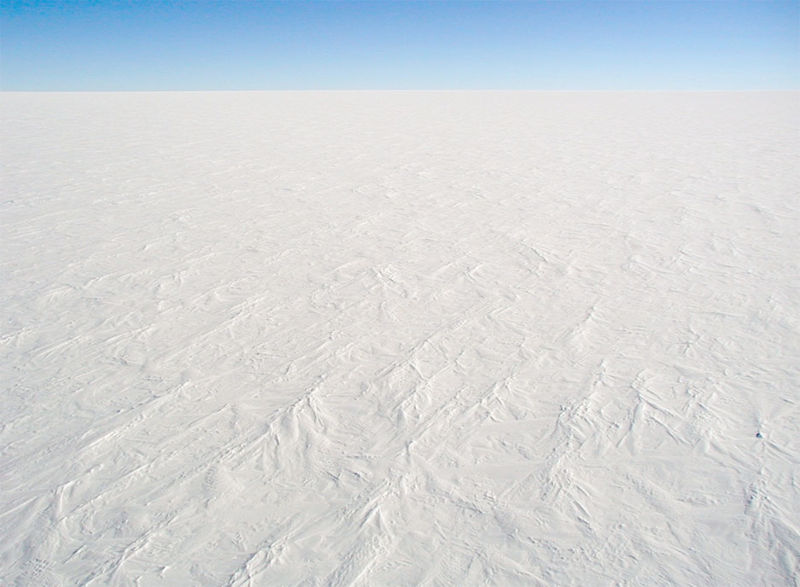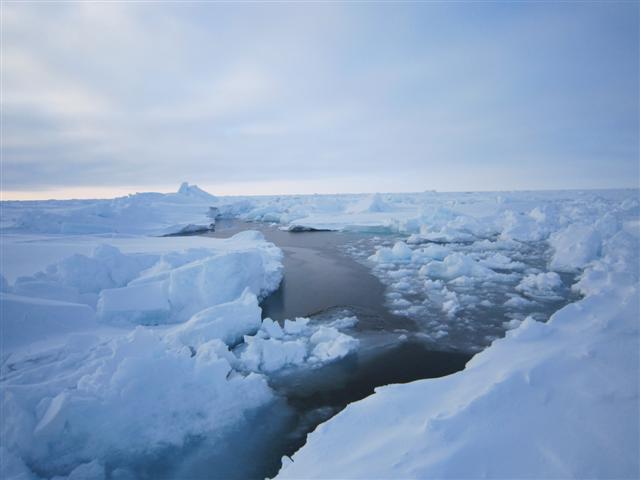Day 11: Reaching the halfway point on the journey to the South Pole
Dr. Ross and the Test Your Limits team celebrate the milestone, but they still face many challenges ahead

Coordinates: South 89.35.1, West 83.55.930 Temperature: -40, plus wind
Well, we finally crossed the half way point! We woke up today and it was not as cold as yesterday, but there was much more wind and in fact, the sun had disappeared.
As a result, when you look around at the horizon, it gets a little nauseating because you can’t tell where the ground ends and the sky begins. Because of the wind, it felt much colder than it was, reaching the -40 degrees Celsius region.
About mid-way through the day, we crossed the halfway point and had a big cheer celebration to know that we were now more than half way on the task of skiing to the South Pole.
Because of the weather, we did four long pushes that were about 2 to 2.1 miles with only three rests.
It was very cold during the rest stop. You’d sit with your back to the wind with your comfortable and warmest jacket on and eat and drink to try to replenish your energy stores.
On a trip like this, we burn somewhere between 4,000 and 5,000 calories per day.
There are a couple of reasons for that; number one is the actual temperature because we generate heat to stay warm; and number two is the exertion and exercise.
Doing your best, it’s very, very difficult to eat that many calories especially with the food that we would typically eat.
Breakfast is started off with porridge and some sort of breakfast meal. There’s a company called Mountain House that makes the breakfast skillets that come out of bag after you’ve added water. Often we’d have this rolled in a tortilla shell to hold it better and to increase calories.
Our snacks are usually Snickers bars, Luna bars and other energy bars.
In the evening, we start with something hot such as soup and then usually another snack, quesadillas being my personal favourite. And then finally, we do dinner, often using Mountain House.
I know that E and L would be mortified to know that the lasagna and meat sauce that comes out of a bag is really actually not that bad, but that’s probably because I’m not Italian.
We try to maintain calories but there’s no doubt that most of us are going to lose a half to one pound per day on a trip like this.
A big shout out to Stacy for her incredible banana chocolate chip bread, which we grilled last night around 10 p.m. Also want to wish a happy birthday to Diego’s grandmother.
There was a great question yesterday comparing trek to the North Pole and South Pole and what are the actual differences and similarities.
The North Pole was actually colder because it was so damp, because you’re only one foot above sea level. As a result at the end of the day, when you got into the tent at the North Pole, there is no tent relief and it's just as cold inside the tent as it is outside.
In the South Pole, there is tent relief. The tent does provide not just shelter but increased warmth in a journey like this, which is excellent because it allows for equipment that has gotten quite wet to dry overnight.
Number two, there is very little change in the landscape in the trek to the South Pole. There are small undulations in the terrain and very gentle valleys and a slow, minimally gradual, inexorable climb as we make our way to the pole.
In the North Pole, the trip is arranged in plates of ice and leads of water. The ice plates have pushed against each other to form ice rubble, which can be two to three storeys high.
 |  |
As a result, the scenery is constantly changing and you see these long plates of ice that look like glass or a hockey rink that you could ski across. This makes the North Pole more interesting visually and also more challenging, as you have to be concerned about open water and some of the technical challenges of actually skiing over ice rubble.
The other difference is that the North Pole is at sea level and the South Pole is significant altitude. There’s no real way to acclimatize, which is why so many of us suffered from acute mountain sickness in the first 36 hours.
Finally, the North Pole has flora and fauna and most importantly, polar bears. There really is no flora and fauna on the trek to the South Pole.
We don’t see any animals, or birds or anything of any kind, which makes it quite different.
In any case, we passed the half way point and as a result, Keith has a very exciting thing for us tomorrow morning: we’re having bacon for breakfast!!! As strange as that sounds, that might be one of the highlights of the trip. Dale is doing incredibly well and remains an inspiration. Michel and Diego are strong machines. Everyone is well. Many thanks to Drs. McDonald and Billia for holding down the fort.
Goodnight everybody.
Your Questions Answered
Thank you to the Journey To The Bottom Of The Earth readers at Yahoo! Canada and our blog followers for these great questions!
At what oxygen saturation level do you become concerned & what do you do?
We would look at a combination of oxygen saturation levels and symptoms. If someone becomes hypoxic, Dr. Ross brought a fully equipped medical kit with a number of medications that can be used to treat high altitude pulmonary edema.
Are you conducting experiments on the trek?
No.
Given the nature of your journey, how would an asthmatic fare in the South Pole regions? Would the thinning air require oxygen for those prone to asthma or would you be okay with the unadulterated fare you might cook up (save the cheeseburgers, etc.)?
It would be a concern for someone with asthma, not just because of the altitude but the cold temperature of the air as well, which could exacerbate the asthma.
What are the effects of snow blindness and the impact it has on your travels?
Snow blindness is a real concern because you have direct sunlight and you also have reflective sunlight off the snow. Every single person has two pairs of protective goggles and one pair of sunglasses. Each person watches out for every other person to make sure our eyes are always protected.
It seems that it is colder during the day than it is at night. If that is so, why don't you guys travel at night and sleep during the day?
The temperature is the same during the night and day. The difference is that we have tent relief, meaning it’s warmer in the tent than it is outside.
What effect does the cold have on the bodies of both the non-transplant participants and Dale? (Blood pressure, oxygen levels, etc.)
To begin, we’re not measuring blood pressure during the trip – we’re measuring oxygen and heart rate. The transplanted heart is denervated. Dale’s resting heart rate is higher than average and takes a little more time than the average person to warm up. Once he’s warmed up, his adrenaline kicks in and he’s as fit as anyone else – or fitter!
How is Dale dealing with his drugs?
With all of treks Dale has done, he has devised storage system for his medication to prevent them from getting too cold and he takes his medications according to his prescriptions.
Are you still following that other group you met 2 days ago?
We could see them off to the west but we pushed on further and are now ahead of them.
What is the best meal you guys had so far?
Cheeseburgers in paradise!
How many times have Keith and Brien come to Antarctica?
For Brien, it’s his first time and it’s Keith’s fourth. But, Brien teaches at a wilderness school and has summated Vinson many times as well as many other mountains. He’s extremely knowledgeable and as a teacher, he provides many helpful tips.
Dr. Heather Ross is travelling to the South Pole to raise awareness for heart disease.
Follow her Journey to the Bottom of the Earth exclusively on Yahoo! Canada.

